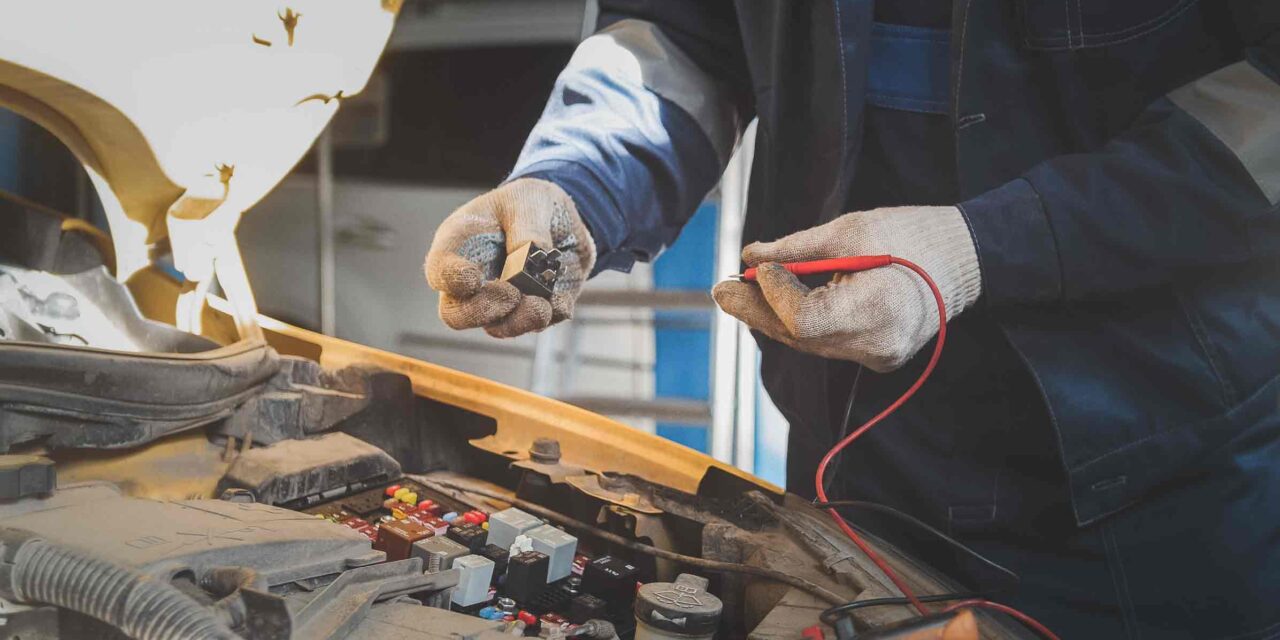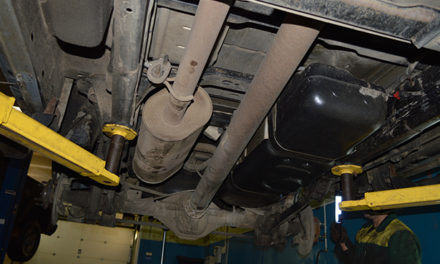When an engine is running poorly or not at all, there’s a tendency to blame the gas. Either it’s “bad gas” or a bad fuel pump.
This is the wrong approach. In some cases what appears to be a fuel problem is actually an electrical fault, either in the ignition system or with the fuel pump feed. Here are a few tips for diagnosing such problems:
Is there a spark?
Get an inline spark plug tester and hook it up to one of the plug leads. If you’ve got a spark, you know the ignition system is producing voltage. Remember though that some faults, like a condenser going bad, might only show up when the engine is under load.
Is the timing right?
On an older engine with a distributor system, this is easily checked. Just point a timing light at the mark on the crank pulley, triggering it with the inductive pickup clipped to the number 1 spark plug wire, and check the advance. (Typically it will be around 12° at idle.).
On late-model vehicles with computer-controlled ignition, it’s not possible to adjust engine timing. However, if there’s a persistent fault you might see the Check Engine light come on.
Is the fuel pump running?
Modern fuel-injected engines have an electric fuel pump, usually in the gas tank. If the car or truck has sat for a while, you’ll often hear the pump run when you first turn the key on. If you’re not hearing it, that’s what to check.
Fords have an inertia switch in the fuel delivery system that cuts the fuel supply in the event of a collision. However, a relatively minor bump can cause it to operate, so check this first.
Once you’ve discounted the cutout switch, check to see if the fuel pump is drawing current. If you find there’s no current, the next thing to check is the fuel pump fuse or relay.
Is gas reaching the engine?
On a carbureted engine you can see if fuel is being squirted in. Just remove the air filter and give the throttle a quick blip. It’s not so easy with a fuel injection system. You’ll need to hook up a gauge to the fuel rail, (most manufacturers provide some kind of fitting) and check to see if you’re getting enough pressure. You’ll probably need the vehicle’s manual to know the acceptable range.
If there’s no fuel, or the pressure is too low, check to see if the fuel filter is blocked. Find it, take it out, and clean it.
Think “electrical” first.
When an engine is running badly, many people start by blaming the fuel pump. While that could be it, the root of the problem is far more likely to be electrical, so start by looking at those things.






![[Vehicle Fitment-1]: Compatible with Lexus GX460 2010-2022 V8 4.6L, LX570 2008-2011 V8 5.7L, LX570 2013-2021 V8 5.7L; Compatible with Toyota Land Cruiser 2008-2011/2013-2021 V8 5.7L, Sequoia 2010/2012 V8 4.6L, Sequoia 2010-2011 V8 4.7L, Sequoia 2008-...](https://m.media-amazon.com/images/I/41kf4wi1OOL._SL100_.jpg)
![[OE Auto Parts] - 35310-2E000 OE 1.8L fuel injectors sold by Pjvmvo are OE parts. We use VIN matching to ensure the integrity of our inventory and accuracy of product descriptions. [Fitment] - 1.8L Elantra & Forte Fuel injectors, Please use "amazon c...](https://m.media-amazon.com/images/I/51JYtJxDvRL._SL100_.jpg)



